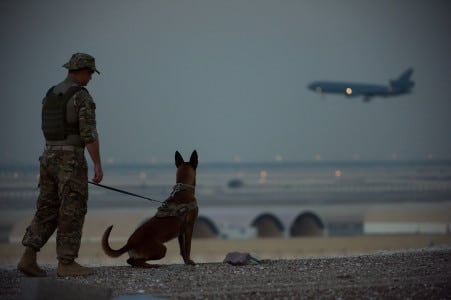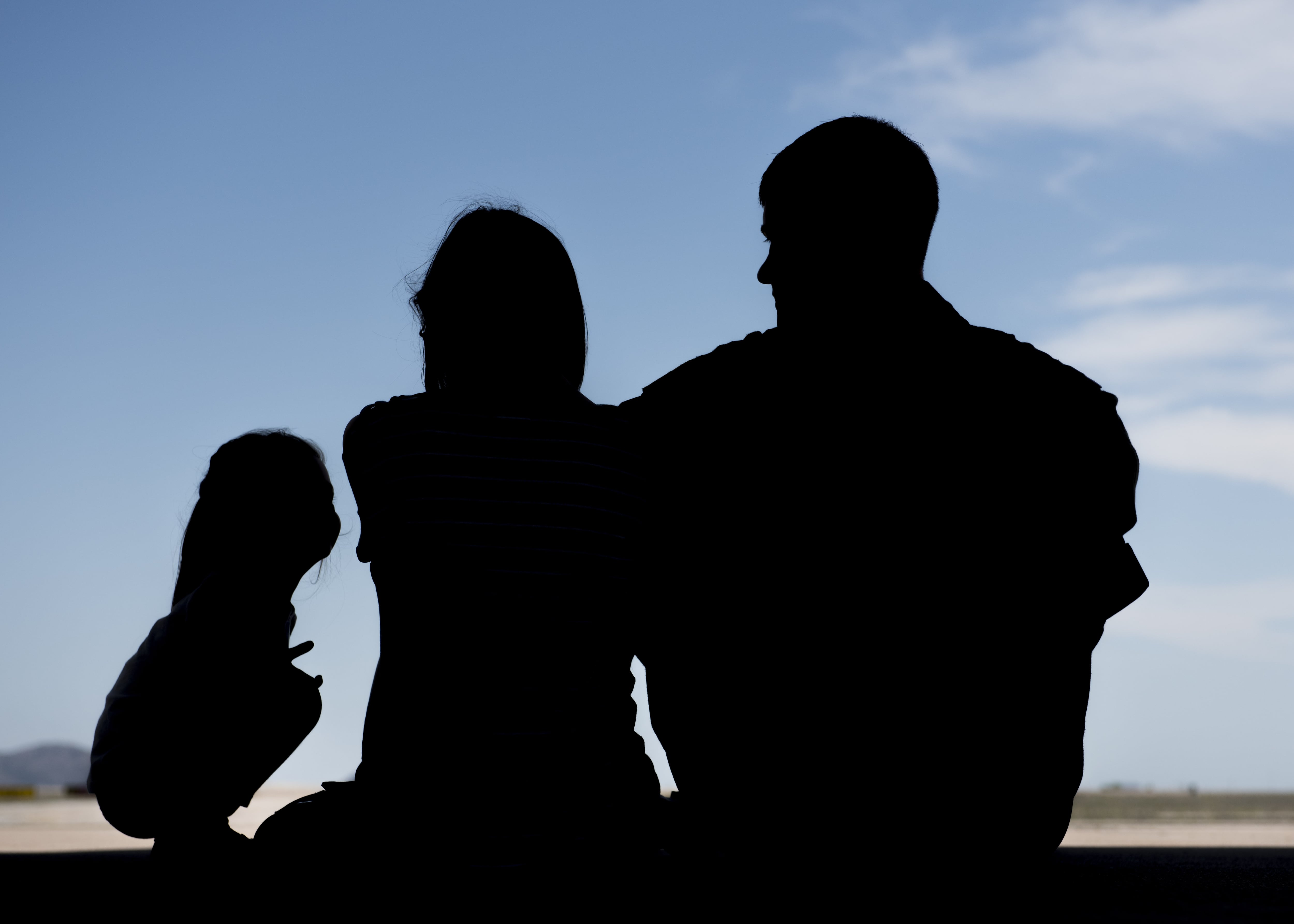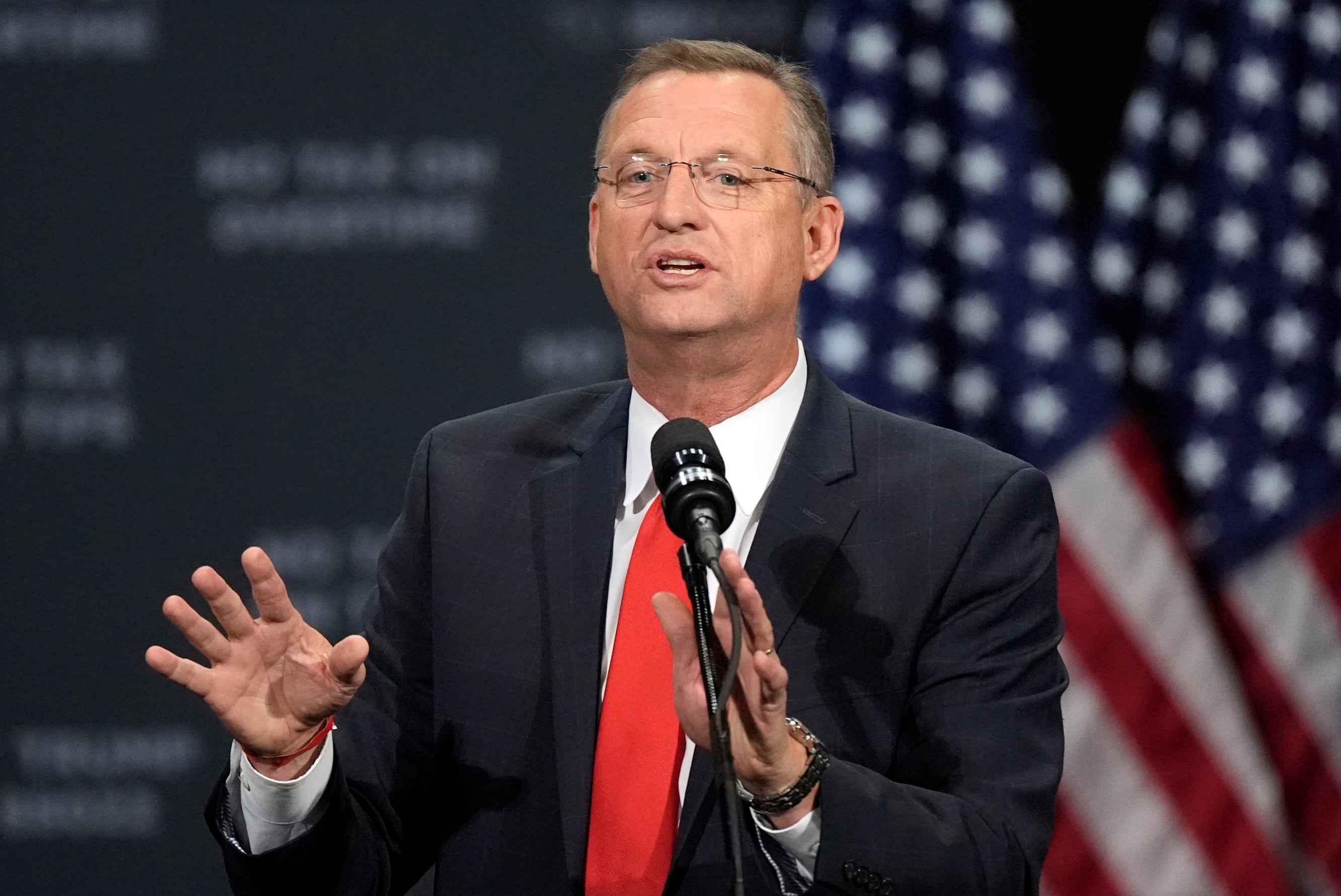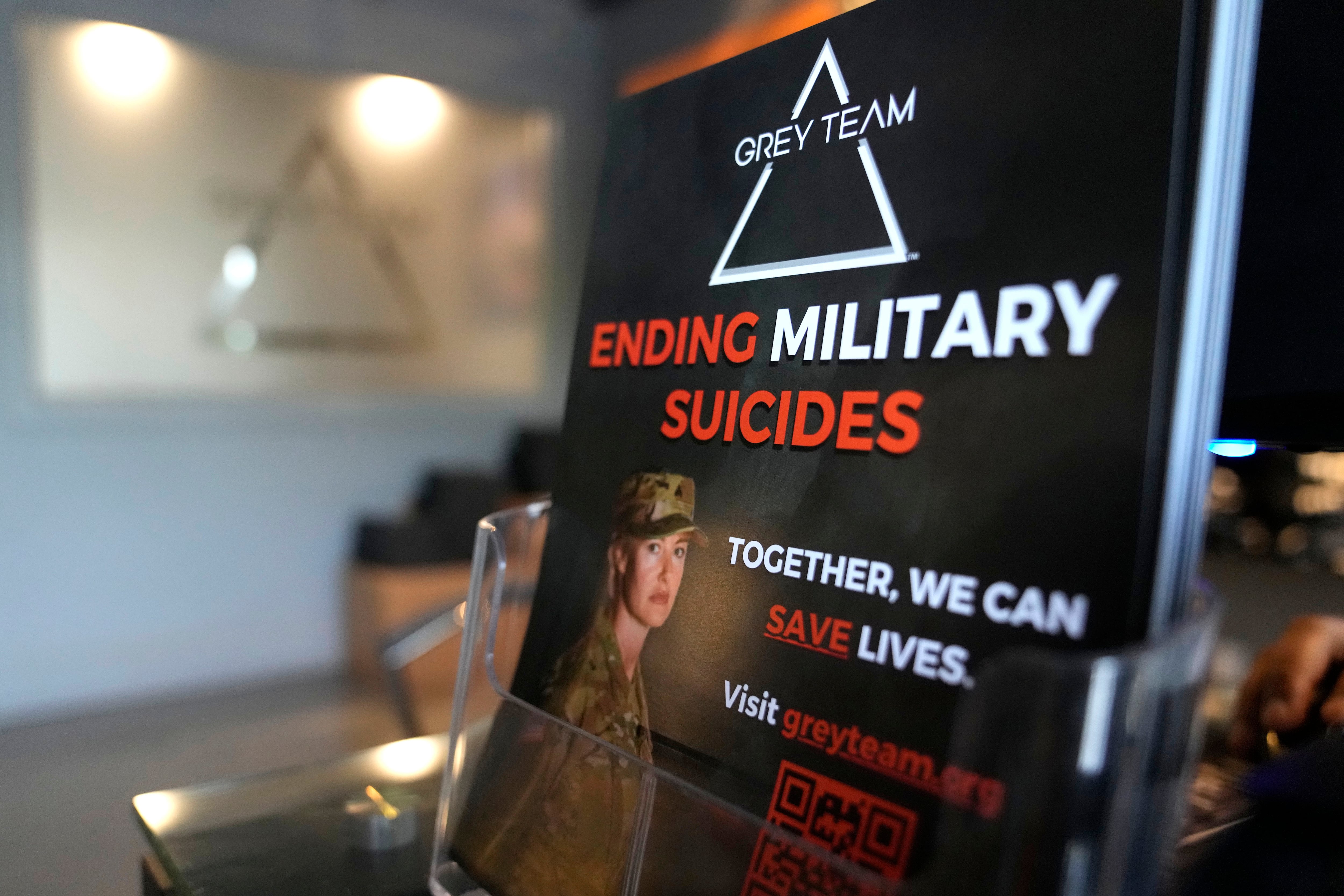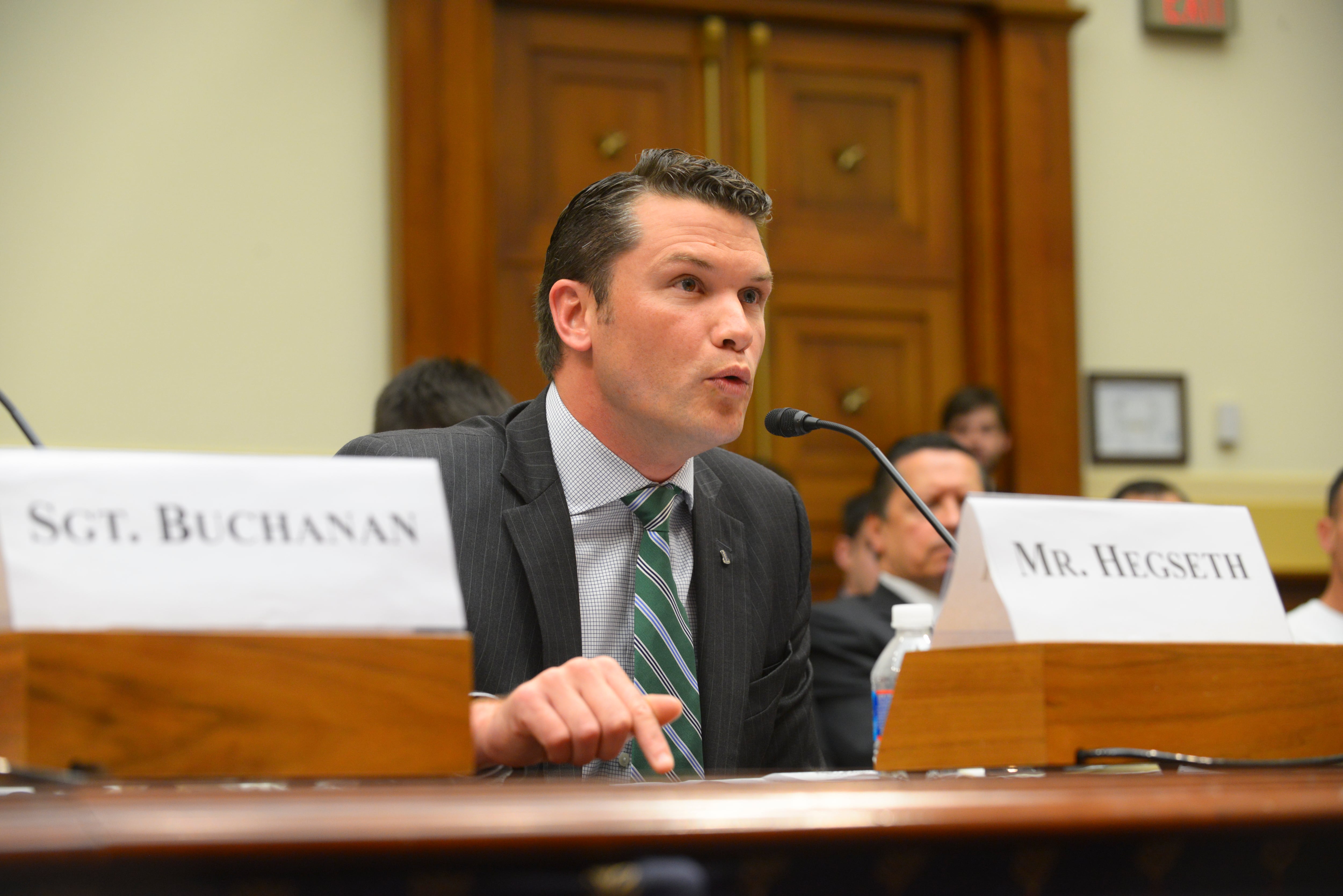As a former K-9 handler who worked with both explosives detection dogs and a narcotics detection dog, I have developed a great deal of respect for all military working dogs and their handlers.
My first dog, Marco P707, and I were both new to the career field. We had unknowingly attended K-9 school together: While he was learning how to sniff out drugs and bad guys, I was learning how to work with these amazing animals.
I remember pulling him out of his kennel for the first time, nervous that I would do something wrong or we wouldn't click. I couldn't have been more wrong.
Marco and I bonded pretty quickly. We learned a lot from one another: I learned that dogs have their own personalities, for instance: Marco was one stubborn dog, who would lay down when I said "sit," and sit when I said "down."
I remember the first time we started doing "bite training" — basically teaching the dog commands on when to "get the bad guy" and when to stop the pursuit. My trainer suited up in a big fluffy jacket for protection; Marco had other ideas.
We hadn’t even started the scenario when Marco jumped up and bit him on the butt, where he had zero padding. Worse, Marco didn't quite have the "stop biting" part down. It took me, the trainer and the kennel master quite some time to get Marco off, luckily leaving only a giant bruise and no serious bite marks.
After a lot of training — and I do mean a lot — and some bonding, Marco and I figured out what we really wanted from one another: He wanted the KongI had in my pocket, and I wanted him to find drugs and bad guys.
Marco and I worked together for about a year; I had him searching rooms off-leash, doing cool tricks and finding real narcotics, but eventually it was time for me to move on to my first explosives detection dog.
I didn’t realize how hard it would be to give Marco’s leash to another handler. After all, we had been together for a year. I was his first handler and he was my first dog.
There are more personal stories I could tell about the dogs I've worked with, but instead, here's a quick look at five other notable military working dogs, or MWDs, across multiple services.
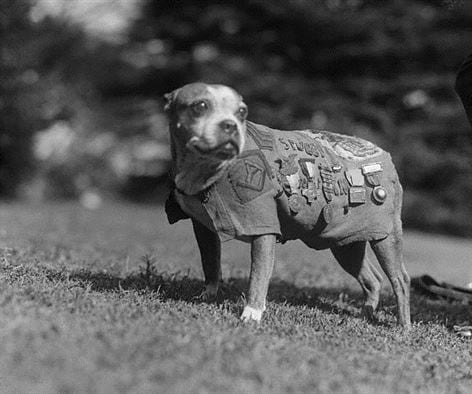
Stubby, wearing his coat and medals.
Photo Credit: Courtesy photo via Air Force
1. Stubby, America's first war dog
In brief:
A stray dog that wandered into an Army training center in New Haven, Connecticut, and ended up on the front lines of World War I.
What you might know:
A famous mascot upon his return from Europe, Stubby participated in multiple parades, met three presidents, posed for a photo with Gen. John "Black Jack" Pershing and received more than a dozen awards, including a Purple Heart. He reportedly could sense incoming rounds and warn soldiers, and once attacked a German spy sneaking into camp, a tale retold in the dog's obituary. In the New York Times.
What you don't know:
Frequently called "Sgt. Stubby," his biographersaid the rank wasn't used in media accounts during the dog's life, and may have been added to his legend posthumously.
What else:
Stubby died in 1926. His coat, covering a cast of the dog, is on displayat the Smithsonian's National Museum of American History.
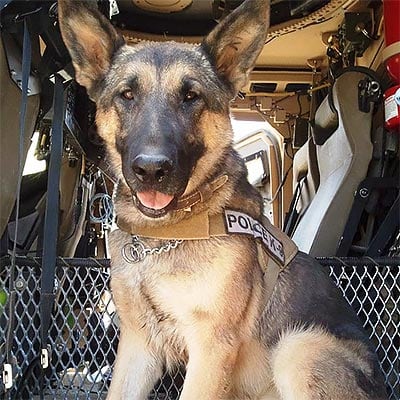
A photo of Bak taken by Capt. Andrew Pedersen-Keel. The U.S. Military Academy graduate died March 11, 2013, along with a fellow soldier and the military working dog, while deployed to Afghanistan.
Photo Credit: Courtesy of APK Charities
2. Bak, heroic in Afghanistan
In brief:
A 3-year-old German shepherd made the ultimate sacrifice on a deadly day.
What you might know:
Bak and handler Sgt. Marel Molina, with 93rd Military Working Dog Detachment, 385th Military Police Battalion, 16th Military Police Brigade, were looking for explosives in Afghanistan's Jalrez district on March 11, 2013, when local forces opened fire on U.S. soldiers in a blue-on-green attack. Molina survived, but Capt. Andrew M. Pedersen-Keeland Staff Sgt. Rex L. Schadlost their lives. Bak died later that day from his injuries, according to an Army news release.
What you don't know:
Bak and Molina deployed in June 2012. The dog made six "major" improvised explosive device finds while in service, per the Army release.
What else: APK Charities, a nonprofit created by Pedersen-Keel's parents, notes Bak's sacrifice on a pageabout the officer's life.
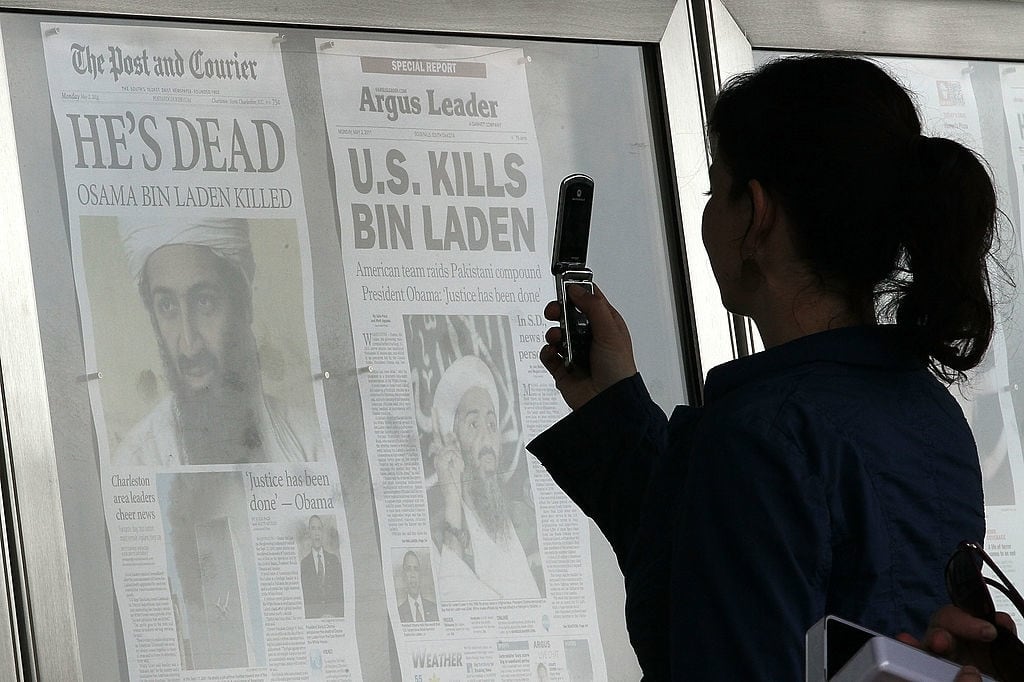
A passerby takes pictures of newspaper headlines reporting the death of Osama Bin Laden, in front of the Newseum, on May 2, 2011, in Washington, D.C.
Photo Credit: Mark Wilson/Getty Images
3. Cairo, part of the bin Laden raid
In brief:
A member of SEAL Team 6, Cairo was widely recognized after the team's 2011 mission in Pakistan that put an end to the long-serving al-Qaida leader.
What you might know:
Much like other military working dogs, the Belgian Malinois was trained to stand guard (alerting team members of anyone approaching), as well as in crowd control, sniffing out bombs and discovering booby traps. The dog was part of perimeter security during the mission, according to the New Yorker's extensive account of the raid.
What you don't know:
Per the New Yorker's account, mission plans called for Cairo to enter the building if SEALs couldn't find bin Laden right away, "to search for false walls or hidden doors."
What else:
When President Obama met the SEALs responsible for the mission, Cairo was waiting in a separate room, according to the New Yorker. "I want to meet that dog," the president reportedly said; he did, but the dog's muzzle stayed on.
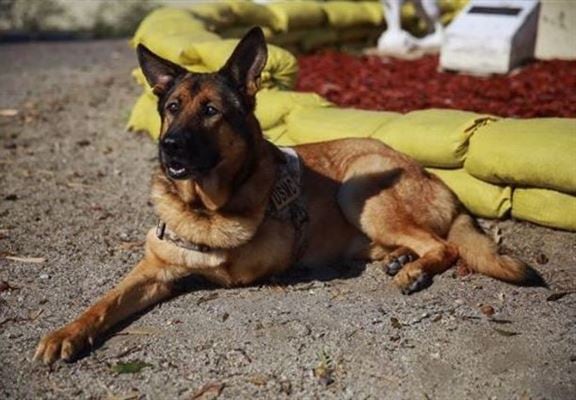
Lucca, a retired Marine Corps military working dog, poses during a visit to Camp Pendleton, Calif., on Feb. 29, 2016.
Photo Credit: Lance Cpl. Caitlin Bevel/Marine Corps
4. Lucca, a wounded warrior
Brief bio:
Through 400 patrols, not a single Marine died under Lucca's service. The dog's final mission proved costly.
What you might know:
The half-German shepherd, half-Belgian Malinois already had found nearly 40 explosive devices while in service when another find came while off-leash in front of Marines in Afghanistan. But a second, undetected blast went off. Lucca's handler at the time, Cpl. Juan Rodriguez, "ran past the known IED, applied a tourniquet, and carried Lucca back to the safety of the nearby tree line," according to a U.S. Central Command news release. The dog lost its left front leg to the blast.
What you don't know:
The dog served six years on active duty before retiring to a couch in California with Gunnery Sgt. Christopher Willingham. In 2016, Lucca flew to London to receive the Dickin Medal, recognized as the highest valor award for animals and seen by some as the canine equivalent to Great Britain's Victoria Cross.
What else:
See a video about Lucca from "Inside Edition" here.
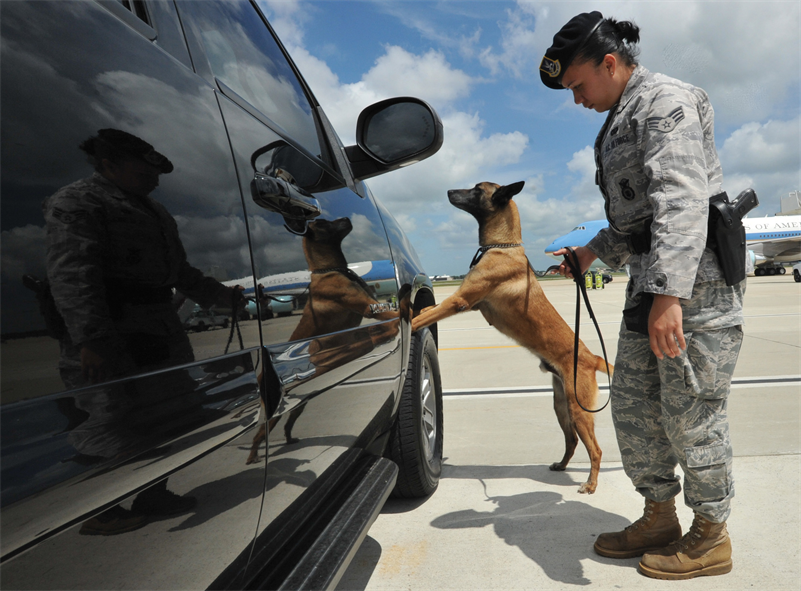
Senior Airman Salema Panama and JJackson run through a security vehicle sweep before a presidential mission at Joint Base Andrews, Md., on June 1, 2010.
Photo Credit: Bobby Jones/Air Force
5. JJackson, everyday Air Force hero
Brief bio:
He may not have the media pedigree of the rest, but as one of "JJ's" former handlers put it, "I knew immediately that there was something about him, I just didn't know what."
What you might know:
The dog's picture is part of the tribute to those who served in the Iraq and Afghanistan wars on display at the National Museum of the U.S. Air Force at Wright-Patterson Air Force Base, Ohio.
What you don't know:
One of JJ's missions in Iraq had a rough start, but an impressive ending. From then-handler Harvey Holt: "We landed a Chinook literally next to the main house and they never heard us because of the extreme wind that night. JJackson was the last off. We had [night-vision goggles] on and there was no depth perception. We thought they landed but they were actually three feet off the ground. Needless to say, JJ and I went face-first into the dirt as the Chinook took off. JJ then found a man hiding in an abandoned bus that we all missed. Saved our ass again."
What else:
JJ received multiple awards for his time on duty, including the Army Commendation Medal. In November, 2014, JJ had a memorialservice in his honor when he passed away at age 11 from health complications. More on the dog's story
.
